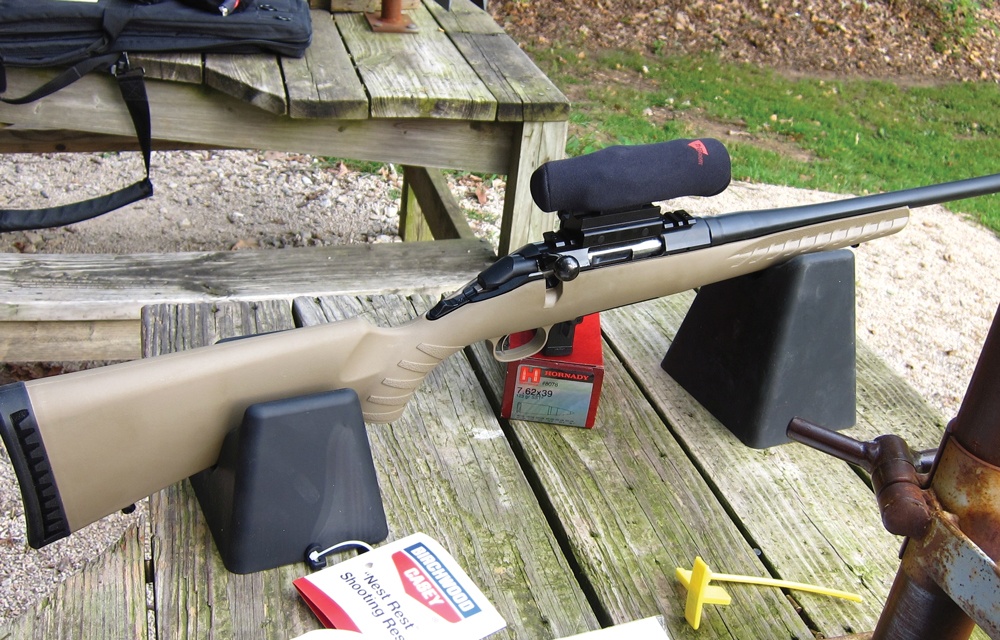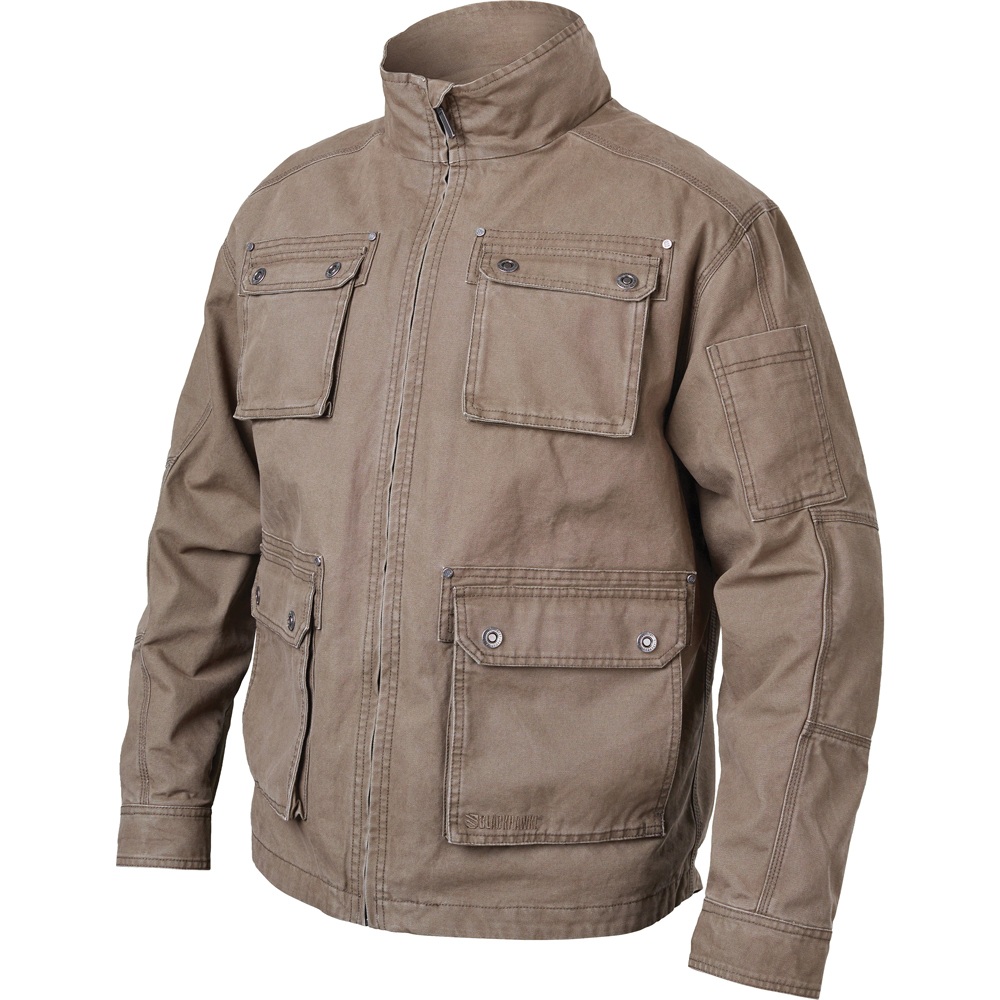
Some of the hottest and most dependable must-have shooting gear and accessories for marksman of every stripe.
What's the tip-top shooting gear?
- Carry Gear
- Shooting From The Bench
- Targets
- Tools
- Lighten Up
- Pistol Sights
- Hearing Protection
- Spare Ammo
- Clothing
The gear listed below features the things I’ve used during the past year while training and shooting. Though a few of these items aren’t technically new for 2018, I consider them must-haves and thus felt them to be necessary additions in order to make this list complete.
Carry Gear
Sometimes, depending on what I choose to wear, I find it’s impossible to carry my handgun in the usual manner of my preference. Other times, I’m trying a different gun for articles. Regardless of reason, flexibility in carry is good — whether it’s age-related medical issues for long driving trips … or to accommodate a new gun.
Galco Shoulder Systems
The basis of Galco, Richard Gallagher’s holster company, is the shoulder system: a shoulder holster on one side with spare ammunition under the opposite shoulder. Due to some back issues, I elected to see if shoulder carry, thus taking the weight off of the belt, would help.
The Classic Lite ($105) I have is for the S&W M&P Shield. Made of light leather, the rig is easy to wear, easy to hide and surprisingly cool. A single magazine pouch is located under the non-gun arm. The horizontal holster also features a tension screw to adjust tightness and a thumb-break snap for retention. The magazine pouch is vertical with the snap flap down. It holds the eight-round Shield 9mm magazine with no trouble.
The Vertical Holster System ($230) I have is for the Glock 19. It carries the gun muzzle down and now features a tie-down option for either side. I have the holster secured to my belt. The holster is tightly molded for the gun and features a finger-break strap. The magazine pouch rides diagonally when the straps are properly adjusted.
In addition to comfort on long drives, these shoulder systems are also handy for keeping the gun and spare ammo together when one retires for the day. If you have to quickly leave the hotel for a fire alarm, shrug the rig on and pull on a covering garment on your way out.
Comp-Tac Q-Series Holsters
The Q Holsters from Comp-Tac Victory Gear are multi-fit holsters designed to lessen that “pile of holsters” handgun people often end up with. Three holsters in four sizes cover a range of modern popular pistols — and two of the holster styles are bilateral, meaning they can be used for right-handed or left-handed shooters interchangeably.

For two of the three holster styles, you simply move the mounting hardware to the other side and it’s converted from right- to left-handed, which is a good deal if you’ve sustained an injury or simply to train with that “other” hand.
The QI ($45) is an inside-the-waist holster with a belt clip and is described as “easy-on and easy-off.” It’s bilateral, with mounting holes on both sides of the holster body. The holster shell is open, meaning that it will take similar-frame-size pistols across slide/barrel lengths. For example, set it to fit the Glock 19 and you can use the Glock 26 “mini-Glock” and the Glock 34 long slide. The sight channel is extreme for those with “suppressor-height” sights, and the holster mouth is wide, making holstering easy.
The QB ($50) is an outside-the-waist holster that shares a range of features with the QI — the Kydex shell, open-ended bottom for varying lengths of pistol slides, retention adjustment, bilateral nature of the holster (right- or left-side carry), funneled holster mouth and large sight channel.
It differs in mounting attachment — a nifty push-button mount — to attach to your belt or elsewhere. The button locks into place and the mount is widely adjustable for cant.
Shooting From The Bench
Not everything on this list is expensive. The Birchwood Casey “Nest Rest” ($30) has made a number of range trips so far this year.

Lightweight and easily transported, the Nest Rest amounts to a pair of large and small rubber-molded gun rests. Putting the larger rest forward for the front of the rifle and using the short one for the stock, you can achieve a very steady position. Place the smaller of the rests inside the larger for transport or storage. I’ve used the smaller rest atop the large one to elevate an AR and for accuracy testing handguns.
Targets
If you’re shooting, having a target to judge your skill is critical. As I use them, the full-size IPSC/USPSA/IDPA target is too big. I consider “D” zone hits as misses — expecting the worst — but I’m not in it for competition. With handguns, starting from 50 yards, I need a target covering the USPSA “A” and “C” zones as well as the “B” headbox.

Competition Target Systems’ “ABC Zone” Steel Target ($115) does just that. It’s a 12-inch by 24-inch plate in 3/8-inch AR500 steel. Mounted on their X-base and using the Pro Hanger to mount the target to a (customer-supplied) 2-inch by 4-inch board, it’s easily transported, assembled, used and removed. The CTS sample is well made and arrived painted.
Tools
Brownells’ Screwdriver Set for Ruger Handguns ($20) is a must-have. I heard about this specialized screwdriver set from retired Border Patrol Agent, Gunsite Instructor and writer Ed Head. It’s a real “Ruger range kit.” It includes Brownells’ hollow handle bit driver, 3/32 Allen wrench bit for stock screws, the tiny windage screw slot bit, one for the elevation screw and the narrow slot bit for mount screws on top of the receiver. For less than $20, you can work on your Ruger pistol at the range or in the shop.

at the bench or at the range.
Wheeler Armorer’s Handgun Sight Tool ($230) has been here since the last quarter of 2016 and has been used around a dozen times by me — once by an armorer friend — to install and adjust sights. As a sight “pusher,” it clamps the pistol slide from the top and both sides. The reference marks help when your aim is simply to press the rear sight across the dovetail to zero the gun to the hold and vision of the individual shooter. The pusher block can be reversed: There’s an angled notch for rear sights, which slant up, and a straight notch for flat-sided sights. I can’t recommend this tool enough.
Lighten Up
Unless you can see in the dark, you need a flashlight. As you age, you need more light to see. I’ve had really good luck with a pair of lights that have been with me every day of the year.

The first is on my belt every day — the ProTac 1L-1AA ($40). It’s a dual-fuel compact flashlight that accepts a single lithium or alkaline battery for flexibility. It’s rare that you are unable to find AA Alkaline or AA Lithium batteries. For a smaller, even more handy light, look at the ProTac 1AAA ($30). This “back-up” flashlight takes a single AAA battery; the alkaline will give you about 30 minutes of light at around 70 lumens from the C4 LED lighting element. A lithium cell will give you longer run time.
Pistol Sights
I’ve long been a fan of Trijicon HD sights. Just this year, I found their HD-XR sights ($100-$175).

The rear sight body is massive and flat at the front, and it features a generous “U” notch. The front sight “ring” is orange or yellow around the front tritium vial and is only .122 inch wide — giving plenty of daylight on each side of the front sight when gazing through the rear sight notch. This is for those requiring a bit more precision or who require more light just to see. I have these mounted on a Glock 17 and on a Smith & Wesson SD9VE.
Hearing Protection

For most applications, I use robust electronic earmuffs. When traveling or making a quick trip to the rimfire/black powder bay at the Club, I use the Walker Razor X ($120-$160) ear plugs. They’re a band worn round the neck with the plugs on the end of tethers that double as wires. Turning the unit on with the plugs in amplifies ambient noise: Think someone calling for a cease-fire. At loud noises — gunfire — the amplifier cuts out, letting the form fitting ear plugs block the noise. It’s rechargeable via the mini-USB port. A cable with a 110-volt plug ships with the unit.
Spare Ammo
I’m a believer in carrying a spare magazine — mostly for use in clearing a stoppage or for refilling after using some of the rounds already in the gun. During the past year I’ve come across two newer magazine pouches.

The first has been around a while but is new to me: the “accordion” style Model 71 Magazine Pouch ($15-$29). It fits most 9mm, .40 caliber, single-stack and double-stack .45 ACP magazines, as well as flashlights, knives and multi-tools. It fits fairly close to the body and holds the magazine securely.
The second is the Raven Concealment “Copia” ($40) magazine pouch. Curved like the human body, it has attachment points fore and aft instead of on the back of the pouch. It’s cut low, allowing a good grasp on the magazine body and has a tension adjustment setup. The top of the pouch is funneled, facilitating your return of the magazine to a pouch.
Why would you want that? Well, I only carry one spare. If I topped off, I’d put the depleted (but not empty) magazine back in a pouch — so I can get to it in the unlikely event I need it. It’s available in single and double configurations.
Field Jacket Or Barn Coat?

The Blackhawk Field Jacket ($150-$160) came along at a handy time. Introduced in 2016, I got to wear it through the cooler months into this year. Made from reinforced canvas, the seams are bar-tacked and are triple stitched for durability where you need it. The pockets are traditional in appearance and have snap closures. Three internal zipper pockets can hold daily necessities including your phone. It’s simple and looks good.
Editor's Note: This article originally appeared in the Winter 2017 issue of Gun Digest the Magazine.

Next Step: Get your FREE Printable Target Pack
Enhance your shooting precision with our 62 MOA Targets, perfect for rifles and handguns. Crafted in collaboration with Storm Tactical for accuracy and versatility.
Subscribe to the Gun Digest email newsletter and get your downloadable target pack sent straight to your inbox. Stay updated with the latest firearms info in the industry.

![Best Concealed Carry Guns In 2025 [Field Tested] Wilson Combat EDC X9S 1](https://gundigest.com/wp-content/uploads/Wilson-Combat-EDC-X9S-1-324x160.jpg)


![Best 9mm Carbine: Affordable PCCs [Tested] Ruger Carbine Shooting](https://gundigest.com/wp-content/uploads/Ruger-Carbine-Shooting-100x70.jpg)
![Best AR-15: Top Options Available Today [Field Tested] Harrington and Richardson PSA XM177E2 feature](https://gundigest.com/wp-content/uploads/Harrington-and-Richardson-PSA-XM177E2-feature-100x70.jpg)
